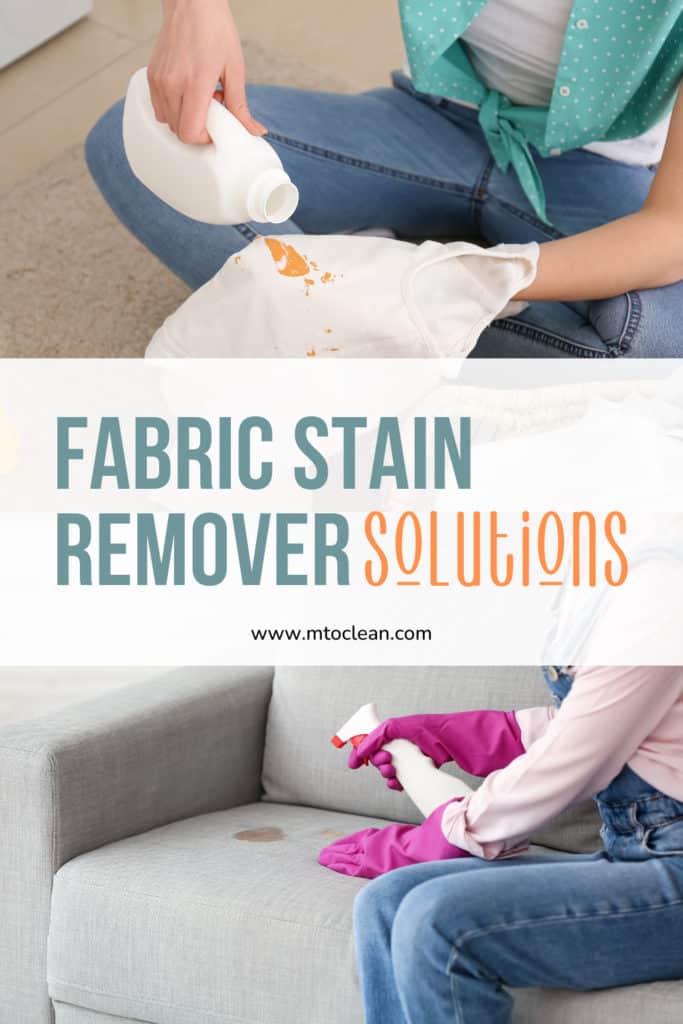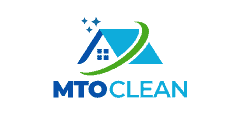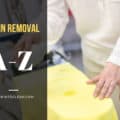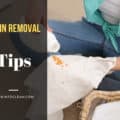Follow these fabric stain remover tips to help get rid of any spots you encounter. This page describes the basic materials you should keep in the house for fabric stain removal purposes and explains the basic ideas and techniques that will help you deal with most household stains successfully.
Recognize a potential stain when you see one. Whether a substance will actually stain depends on the fiber and the fabric and what sorts of stains they are particularly vulnerable to. It also depends on what cleaning procedures the fabric in question can tolerate. Delicate antique lace that will not take bleaching or rubbing is a far more difficult case for stain removal than sturdy cloth, carpets, or upholstery that you can subject to vigorous cleaning measures.
Fabric Stain Remover Dos and Don’ts
Not all fabrics take kindly to every type of laundry or stain-removal product.
Cotton
- Don’t use chlorine bleach or fabric softener on children’s cotton nightclothes. Both of these substances will harm the flame-retardant finish, which is mandated by law for children’s sleepwear.
- Vinegar, with its high degree of acidity, can be harmful to cotton. If you use it for stain removal, sponge the stain with the vinegar solution, then wash the item immediately.
Silk
- Don’t use acetone.
- Don’t use chlorine bleach.
- If the silk is washable, avoid detergent with enzymes. Use a mild liquid hand dishwashing detergent or a product specially formulated for silks; baby shampoo is a great substitute.
- Don’t use prewash fabric stain removers with enzymes.
Spandex
- Don’t use chlorine bleach on anything with spandex fibers. It will destroy the elasticity.
Wool
- Most wools are dry-clean only; some (particularly wool knits) can be gently hand washed and air-dried. Check the care label.
- If the wool is washable, avoid detergents with enzymes. Use a mild liquid hand dishwashing detergent or a product specially formulated for washing wool – or try baby shampoo instead.
- Don’t use prewash stain removers with enzymes.
What Fabric Stain Remover Removes What
There is more than one way to remove a stain. You will read widely different remedies for the same problem, all of which may work. But there are some stains that you have to give up on. Some stains will respond gradually, so that you will have to apply your remedy a half dozen or more times before you are completely successful. You may need all your patience. Test the effect of any fabric stain remover you choose to use on an inconspicuous area. Many substances that will remove stains sometimes cause fabric to deteriorate or affect dyes or finishes.
The following collection of fabric stain removers will serve for most purposes. The majority of the items included are also used in other ways in the home.
See also:
- All purpose detergent
- White vinegar
- Lemons
- Bleaches – hydrogen peroxide (3% solution), commercial oxygen (all-fabric) bleach, household chlorine bleach.
- Ammonia
- Alcohol
- Nail polish remover (acetone type)
- Solvent type cleaning fluids, dry cleaning fluids, or spot removers (for use on items that require dry cleaning)
- Non-solvent stain or spot remover (these contain detergents and water and cannot be used on items that require dry cleaning)
- Enzyme pretreatment product or detergent
- Laundry stain pretreatment product (some contain solvents)
1. Detergents
The best fabric stain remover for practically all types of textile “stains” is plain detergent and water. I follow common usage in referring to just about any soil as a “stain,” but in my family we use that word to refer only to marks that would not come out at all after ordinary efforts. When you read ads for fabric stain removers that remove food and grease “stains,” don’t be deceived. Rarely should extraordinary efforts be necessary to remove spaghetti sauce or butter smears from your child’s clothes. Usually, if you simply scrape off the excess, rub in a little liquid detergent, and throw the article into the washer with hot water and more detergent, the “stain” disappears.
Generally speaking, granular detergents are better at stains that respond to builders, such as mud and clay, because these detergents rely more on builders for their cleaning power. Liquid detergents are better at organic stains such as gravy, blood, and grass because they rely more on surfactants for their cleaning power. But most detergents of either type will remove food stains and oils and grease effectively.
Most stubborn food soils respond readily to pretreatment, whether with a pretreatment product or a little liquid detergent rubbed into the spot. Oil stains on synthetic fibers such as polyester and nylon are the most resistant. For these, a solvent-containing prewash stain remover is particularly helpful. In general, when fabrics are prone to staining or just to be sure, you should pretreat spots. Presoaking laundry is also highly effective. Enzyme presoak products help with food soils.
If, after washing, you find a spot, do not dry the article and certainly do not iron it. Heat sets many stains. Instead, try to treat the stain again while the article is still wet, and pretreat, presoak, and launder again.
2. Bleaches
These fabric stain removers are used to render the staining material colorless and invisible, as well as to help actually remove it. A mild bleach such as hydrogen peroxide will be safe for almost every white fabric. It will remove most fruit stains. Test it before using on any colored fabrics. Chlorine bleaches can be tried on chlorine bleach-safe fabrics (most whites, some colorfast colors) to lighten or remove a wide variety of stains, among them those caused by coffee, tea, soft drinks, Popsicles and fruit ices, children’s medications, grass, mustard, fruits or fruit juices, ink, or blood. But chlorine bleaches will not work on rust.
3. Acids
Acids are used on rust, oxides, and mineral deposits. If a clothes hanger leaves rusty marks on a shirt, you might apply a solution of lemon juice with water or white vinegar mixed with water, then rinse thoroughly and launder (or see Rust Stain Removal). You could try the same solution on brown or yellow spots in stored linens, as these tend to be caused by oxidized residues of soil or detergent. (In each case, half-and-half proportions are usually good enough, but you might sometimes try full strength for more effect. Some people add salt to the lemon juice solution. You must test a lemon juice or vinegar solution on an out-of-sight area of the article, just as you test detergents and spot removers, as such a solution can adversely affect some fibers and some dyes.) There are also commercial rust removing preparations, such as Whink, that you can buy at home centers, houseware and hardware stores, or stores where washing machines are sold. These commercial preparations contain acids (hydrofluoric acid or oxalic acid); read their labels and follow all cautions carefully.
Warning! Do not mix acids or acid-containing substances with chlorine bleach or substances containing chlorine bleach. This will produce hazardous fumes.
4. Ammonia
Ammonia, which is alkaline, is sometimes used to neutralize acid substances. Purchase the household version of ammonia, which works well on dried blood, perspiration, citrus, juice, felt-tip pen, urine, and other acid-based stains. Note, however, that ammonia can damage silk and wool fibers. For fabric stain removal purposes, stay away from the sudsy or scented offerings. Test ammonia (and all fabric stain removers) on an inconspicuous part of your soiled item first since it can cause some dyes to run. And never mix chlorine bleach and ammonia – the resulting fumes are hazardous.
5. Alcohol
Alcohol is an effective solvent for cleaning and eliminating stains, and it kills germs too. Alcohol comes in several forms and is an organic compound consisting of hydrocarbons. It’s a colorless liquid, has a mild odor and is highly flammable. Common forms are isopropyl alcohol (often called rubbing alcohol, used for massages, as an antiseptic and as a cleaning solvent) and ethyl alcohol, or ethanol (the stuff in alcoholic drinks and a common ingredient in cleaning products, mouth wash and hair sprays). Denatured alcohol is ethanol that contains a small amount of poisonous methanol, or wood alcohol, making it unfit for consumption. It’s commonly used to thin or remove paint and varnish and to remove greasy smudges from surfaces. Rubbing alcohol is good for removing ballpoint ink, pencil, mascara, and colored candle wax residue, even from dry-clean items. Don’t purchase rubbing alcohol with added color or fragrance; it may damage the fabric.
6. Solvents
Water is the universal solvent, since it can be used to dissolve many different substances, from dirt to blood to certain paints. In cleaning terminology, however, solvent refers to liquids other than water that are used to dissolve things water can’t dissolve. Water can’t dissolve grease, for instance. Working on the principle that “like dissolves like,” you’d need a non-water-based solvent, such as mineral spirits, to dissolve grease. Common cleaning solvents include acetone (found in many nail polish removers), denatured alcohol and turpentine, as well as petroleum-based chemicals, such as mineral spirits, naphtha, paraffin and dry-cleaning fluids.
Cleaning uses for solvents typically include removing greasy or oily substances, cleaning materials that can be harmed by water (for instance, spot-cleaning dry-clean-only fabrics) and removing decals, wood finishes, oil-based paint and waxes. These fabric stain removers are a last resort, to be used for the few things that water and detergent won’t clean. Solvents tend to be strong, aggressive cleaners. Although they can be dangerous to breathe and dangerous when they contact your skin and eyes, they vary in their degree of toxicity.
7. Enzyme Pretreatment Products
Enzyme digesters are chemicals, created by microorganisms, that eat away organic matter. So they’re effective on organic stains – in other words, such unpleasant things as urine, vomit, feces, protein stains and the odors associated with them.
This fabric stain remover makes a great laundry presoak that eats away at organic stains before you run garments through the wash. Use warm water in the soak, according to the package directions (the exception being blood, which requires cold water). Careful: enzymes will eat away at animal fibers, including silk and wool. Enzyme treatment products can be obtained from supermarkets and pharmacies.
8. Spot Removers
The grocery shelves are lined with spot and stain removers. While the number of different ingredients in fabric stain removers is mind-boggling, these products fall into two main categories – wet and dry.
Wet spot removers are water soluble. These typically contain a concentrated laundry detergent and work best on food stains, such as drink spills and ketchup. They may also contain secondary solvents, such as alcohol and mineral spirits to boost their stain-removal power and make them more effective on greasy stains.
Dry spot removers contain chemical solvents, including some that dry cleaners use. (Liquid is still involved. The “dry” means water isn’t used.) These are best for dry-clean-only fabrics as well as greasy or oily stains.
A word of caution: Be sure to use the right fabric stain removal product for the right job. To make sure the material you’re cleaning is colorfast, pretest the product on an inconspicuous corner or seam. Always follow the manufacturer’s directions carefully.
Keep the above fabric stain remover materials on hand to increase your chances of spot removal success!







